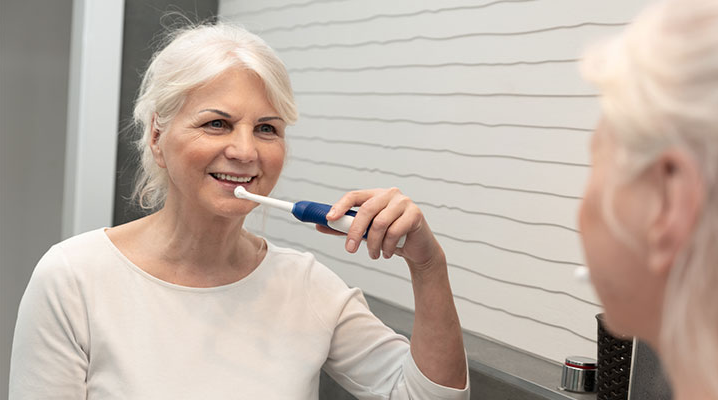
Our mouths need dental care day and night, and it’s important to find a way to make that happen. Brushing and flossing with arthritis in the hands can be painful, but avoiding daily care only leads to more pain. Ignoring oral health leads to gum disease, cavities, and even losing teeth.
Lack of dental care can also be bad for the rest of the body. There’s more than one way oral health and joint pain are connected. Learn what joint inflammation has in common with gum disease, and tips for an oral health routine that accommodates arthritis pain.
Researchers have found a significant relationship between our mouths and our joints. One study found that the fewer teeth a person has, the greater their risk for joint inflammation. Patients with fewer than 20 teeth had eight times the risk of swollen joints as someone with all their teeth!
There is also a growing body of research linking periodontal disease - gum disease - with rheumatoid arthritis. Another study from the late 90’s found that people with moderate to severe periodontitis face over twice the risk of developing rheumatoid arthritis than someone with even mild periodontitis.
Periodontal disease and rheumatoid arthritis have this in common: inflammation. Inflammation in the body can lead to inflammation in the mouth. Likewise, chronic inflammation from gum disease can impact overall health, leading to higher blood pressure and cholesterol levels.
Poor dental health increases the bad bacteria in the mouth. This can lead to bacterial infection in the blood stream, impacting the heart. Maintaining oral health will help maintain overall health, and needs to be done even with arthritis pain.
Brushing and flossing problems are so common for people with joint inflammation that the UK National Rheumatoid Arthritis Society has an entire webpage dedicated to dental care with arthritis.
Use these tips to ease the process of brushing and flossing:
Talk to your dentist to find what best suits your needs.